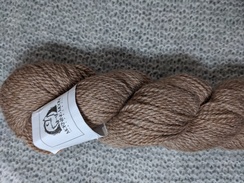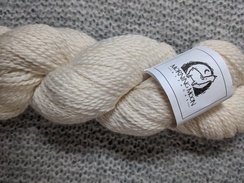Parasites and Drug Resistance
Great information for Alpacas as well!!!!!
Species differences -
Cattle: Because cattle have evolved with parasites, they are more adapted at fighting off parasites; it is rare to see an adult cow die of clinical parasitism. Drug resistance can occur if a lot of dewormer is used, however since most producers don't deworm multiple times a year, drug resistance is less of a problem in cattle.
Sheep: Sheep are more susceptible to parasites than cattle. Adult sheep can become overwhelmed with parasites and die. Because of this, more dewormers have been used and parasite drug resistance has become a major problem in certain areas of the country.
Goats: Goats are very susceptible to parasites, even more so than sheep. They also tend to metabolize drugs faster than sheep, so often they are under-dosed. Drug resistant parasites are considered a major problem for goat producers in the USA. (Just like Alpacas)
Not all sheep and goat producers are destined to have drug resistant parasites. In general, anything that increases a producer's dependence on dewormers increases the chance of resistance such as environments that enhance parasite transmission and parasite numbers. Some examples of increasing risk are:
1. Purchasing animals from farms that have resistant parasites.
2. As flock or herd size increases, so does the parasite risk.
3. Running lambs or kids on pasture increases parasite loads.
4. Increased grazing utilization of pastures.
5. Farm history of parasite problems.
6. Deworming the flock or herd multiple times per year.
7. Ambient temperatures that stay above 50°F at night for extended periods (weeks or months).
Strategies that prevent or reduce the risk of parasite development:
1. Reduce the amount of dewormer use.
2. Use dewormer only on the most susceptible animals (such as using the FAMCHA program).
3. Decrease grazing utilization of pastures/increase browsing.
4. Utilize crop residue and hay fields for grazing and harvest pastures for hay.
5. Mixed species utilization of forage, i.e. sheep/goats grazing an area, then cattle or horses graze that area.
Summary: As you can see, implementing strategies that reduce parasite resistant development can cost money and reduce efficiency, but so do parasites. Producers must work to develop an individual deworming program that fits their production system and is sustainable. General recommendations such as deworming three or more times a year without considering parasite resistance have served the sheep and goat industries poorly in the past.
Parasites that are resistant to dewormers have driven producers out of business. We must keep a susceptible parasite population in order to treat animals effectively in the future. There are no new drugs in the "pipeline" that will be approved for food animals in the next few years. Improper use of the ones we have available will seriously hinder the sheep and goat industry in the future.
Suelee Robbe-Austerman, DVM, MS
Veterinary Medical Officer
Bacterial Diseases of Livestock Research Unit
National Animal Disease Center, ARS, USDA
2300 Dayton Avenue, Ames, IA 50010
December 14, 2012


